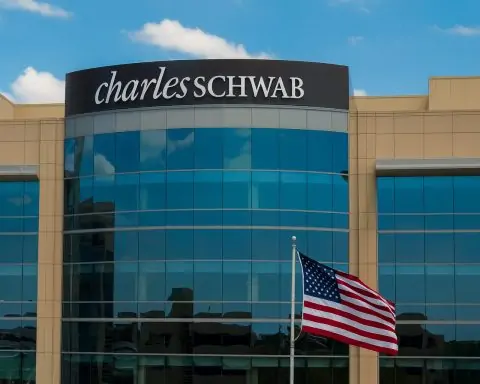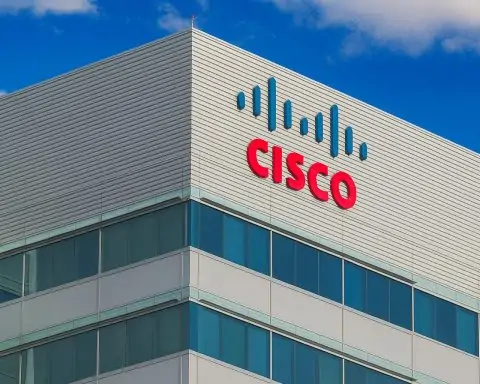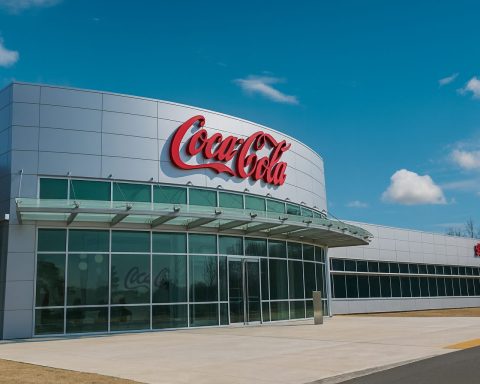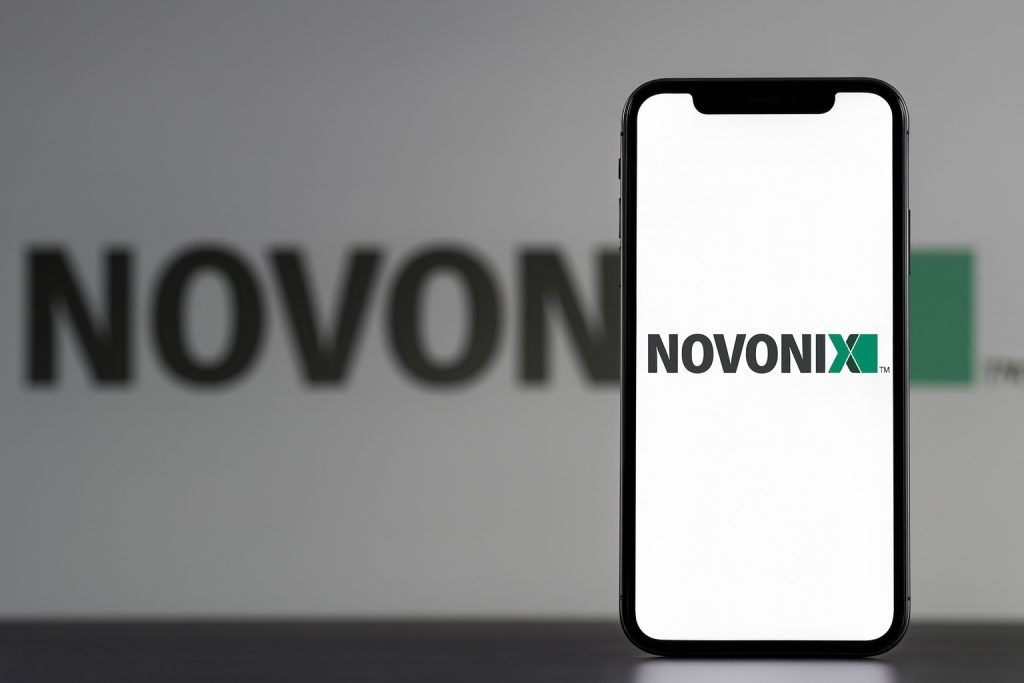- Current Price: ~$101.8 (Oct 12, 2025), near 52-week high (52-wk range $79.8–106.1) [1]. Up ~30%+ over past year [2].
- Market Cap: ~$820–830 billion (post-3-for-1 split in 2024) [3]. In fact, after a 470% 15-year run and that stock split, analysts note WMT needs only ~22% more to join the $1T club [4]. Forward P/E is ~36× [5] – well above Walmart’s historical avg (~25×) but below Costco’s ~49× [6].
- Q2 FY2026 Results (Jul 2025): Revenues +4.8% YoY (cc +5.6%) to $177.4B [7], beating forecasts. U.S. comps +4.6% (ex-fuel), U.S. e-commerce +26%, Sam’s Club comps +5.9% [8] [9]. High-margin segments surged – global eCommerce ~+25% [10], Walmart U.S. eCom +26% [11], advertising revenue +46% (Walmart Connect +31% in US) [12] [13]. Membership fee income jumped ~15% (with +7.6% at Sam’s Club) [14] [15]. These digital and loyalty gains offset margin pressure (GAAP operating profit was down 8.2% due to costs) [16] [17]. Management raised full-year sales and EPS guidance after Q2, reflecting confidence in these growth engines [18].
- Analysts & Targets: Consensus is bullish. 30+ analysts rate WMT a Buy/Strong Buy, with an average 12‑month target ~$111–113 (about +9–11% upside) [19] [20]. Only 1 of 40 analysts currently rates it a sell [21]. For context, Zacks assigns WMT a #2 “Buy” ranking (vs. Target’s #4) [22]. Broker targets range from ~$110 up to ~$125–129 per share [23]. The Street expects moderate further growth, reflecting guidance around +3–4% sales and EPS near $2.52–2.62 for FY2026 [24] [25].
- Dividends: Walmart has a 53‑year dividend streak. Yield is low (~0.92% [26]) but growing – the company just raised its payout ~13% to $0.94/share (annualized) in early 2025 – the biggest bump in over a decade [27] [28]. Growth remains steady (5-yr DPS up ~4.4% annually [29]).
- Major Developments: Recently, Walmart has pushed convenience and tech: Sam’s Club extended Sunday hours (8 am–8 pm) to drive traffic [30], and Sam’s leadership aims to double Sam’s membership and more than double sales/profit over 8–10 years [31]. Tech partnerships are expanding – e.g. Alphabet’s Wing drones will serve ~100 Walmart/Sam’s locations [32] – cutting delivery times. On automation, Walmart agreed to invest $520M with Symbotic in new AI-robotic fulfillment centers, a move called “one of the most ambitious” in retail automation [33] [34]. These moves signal Walmart leaning heavily into digital and high-efficiency logistics.
- Competition: Walmart dominates grocery/value retail, but faces serious peers. Costco (membership-only wholesale) had ~79.6M members in FY2025 and ~+11% stock gain YTD [35] [36]. Costco stock trades much higher (forward P/E ~49× [37]) but has less upside (trading just ~9% below its high). Target relies on style-driven retail and omnichannel, but its stock lagged (comps down 1.9% in Q2 FY2025 [38], stock -44% Y/Y [39]) and forward P/E is very low (~11× [40]). Amazon remains the e-commerce leader (market cap >$1.5T) but with an even higher valuation; Walmart focuses more on groceries and uses its 4,700+ stores as fulfillment hubs [41] [42]. Investors thus view Walmart as a middle ground – more stable than pure tech plays, but pricier than traditional shops.
Stock Price & Performance
WMT has been a standout in retail this year. Its share price trades just under $102 [43] and is a few dollars off its 52-week peak (~$106). Over the past 12 months it’s gained roughly 30%, far outpacing Target (down ~44%) [44]. This strong run reflects Walmart’s mix of recession-resistant grocery sales and booming digital businesses [45]. After splitting 3-for-1 in 2024, Walmart’s market cap (~$820B) is within striking distance of $1T (about +22% away) [46]. Notably, its forward P/E (~36×) is above its own historical norm and well above main rivals like Target (11×) [47] but below Costco’s (~49×) [48], underscoring a high-growth premium. Trading ranges suggest technical strength: as one chart service notes, all major moving averages are rising and beneath the stock’s price [49], and WMT has formed a bull-flag consolidation (resistance ~$104–105, support ~$100–102) [50]. A breakout above $105 is a common bullish target, implying potential for additional gains [51]. However, momentum indicators are neutral short-term, so traders watch key support near $100 [52].
Financials & Earnings
Walmart’s latest results underscore steady fundamentals. In Q2 FY2026 (ended July 31, 2025) total revenue rose 4.8% YoY to $177.4B [53]. U.S. store comps grew ~4.6% (even excluding fuel) and Sam’s Club comps +5.9% [54]. Growth was broad‑based: U.S. e-commerce exploded (+26%) as customers embraced online pickup/delivery, and international sales +10.5% (cc), led by Mexico and India [55]. Importantly, higher-margin segments powered the bottom line. Global eCommerce revenue jumped ~25% [56], Walmart Connect advertising saw a 31% U.S. increase (46% including the Vizio media unit) [57] [58], and membership fees (Walmart+ and Sam’s) grew ~15% (Sam’s +7.6%) [59] [60]. These strengths offset cost pressures: GAAP operating income fell 8.2% (due to some legal/insurance charges), but adjusted OI (cc) ticked up slightly (0.4%) [61]. Adjusted EPS of $0.68 (vs. $0.67 LY) modestly beat consensus, but was below earlier estimates [62]. Management highlighted these results as validating its omnichannel strategy – Walmart noted it “delivered continued sales momentum” and continues “operating discipline… while driving growth in higher-margin businesses” [63]. Importantly, based on this performance the company raised its full-year sales and EPS guidance [64], signaling confidence. Continuing trends: analysts expect FY2026 consolidated sales +3–4% (cc) and adjusted EPS roughly $2.52–2.62 [65] [66]. The firm is targeting those goals, leveraging its large store base (now micro-fulfillment hubs) and digital tools. Retail watchers say these results leave Walmart well‑positioned: its mix of essential groceries and digital services is “a sweet spot” in a tough economy [67].
Dividends & Shareholders
Walmart has a rock‑solid dividend history (53 years of raises). It currently yields only ~0.92% [68] (reflecting the large stock price), but the payout is growing: in Feb 2025 WMT hiked the quarterly dividend by 13% to $0.235 (annualized $0.94) – the steepest raise in over a decade [69]. Over the last five years DPS has averaged ~4.4% growth [70], which is healthy given Walmart’s mature size. The payout ratio is conservative (~36% of earnings), suggesting room for continued raises even if earnings grow modestly. In August 2025 the board approved another quarter’s dividend at the new level. Walmart also repurchases stock when appropriate: share buybacks have been relatively modest recently (focus is on reinvestment in stores/tech). Overall, shareholders benefit from steady income plus capital growth.
Growth Strategy & Initiatives
Walmart’s strategy focuses on omnichannel convenience and new revenue streams. Key initiatives include:
- Technology & Fulfillment: Walmart is pushing automation. In Sept. 2025 it agreed to invest $520M (including $230M up front) with Symbotic to create next-gen micro-fulfillment centers inside stores [71]. Supply-chain experts call this a very bold move – one reviewer said it may “redefine how online orders are fulfilled” by turning local stores into automated hubs [72] [73]. Separately, Walmart is experimenting with AI and in-store tech (for example, its “Marty” AI assistant helps with cleanup). The company is also involved in drone delivery pilots: Alphabet’s Wing is set to operate drone deliveries from 100 Walmart/Sam’s locations [74]. These innovations aim to cut delivery times and costs, which would broaden Walmart’s competitive moat in e-commerce and grocery.
- E-commerce & Membership: Walmart is leveraging its ecosystem. Walmart+ membership programs have attracted ~27M customers (roughly +35% YoY) [75], offering free delivery and streaming benefits. In Q2 the combined membership fee income (Walmart+ and Sam’s Clubs) jumped ~15% [76]. The push to digital is clear: Walmart U.S. online market (store pickup and delivery) keeps rolling out nationwide, and the company recently expanded its DoorDash partnership. It is also building out “dark stores” (small fulfillment centers) and upgrading mobile apps for groceries.
- Advertising & Marketplace: The in-store data and traffic are fueling new profits. Walmart Connect (its ad platform) is growing fast – U.S. ad revenue was +31% in Q2 [77]. The Vizio acquisition turned its TVs into ad screens too. Meanwhile, Walmart’s online marketplace (third-party sellers on Walmart.com and Flipkart) is expanding globally. These higher-margin businesses mean a bigger slice of revenue from non-retail sources. Analysts note Walmart’s focus on these alternatives (ads, fintech, etc.) as a tailwind for profit margins [78] [79].
- Sam’s Club Revamp: Walmart is aggressively nurturing its warehouse club unit. Sam’s just announced 8 am–8 pm hours daily, including extended holiday hours, to attract weekend shoppers [80]. CEO Chris Nicholas has publicly set ambitious goals – he wants to double Sam’s membership base and more than double its sales and profits within about 8–10 years [81]. With Costco’s thriving membership model as proof (Costco has ~80M members with ~92% renewal [82]), Walmart seems determined to capture more of that market via Sam’s Club and Walmart+.
- International & Other: Walmart still has large overseas operations (Walmex in Mexico, Flipkart in India, etc.) that are growth engines. In Q2, international net sales grew ~10.5% (cc) [83]. The company continues to invest selectively in markets (e.g. keeping up with changing Indian regulations). Additionally, Walmart is expanding services like in-home healthcare/insurance and fintech (banking services at stores, the Walmart MoneyCard) though those businesses are smaller.
All told, Walmart’s strategy is to leverage scale, low prices, and tech to drive steady growth. Its broad investments (logistics automation, AI tools, new store formats, expanding Sam’s, boosting membership, etc.) are widely cited by analysts as reasons for confidence [84] [85]. Retail veteran Brittain Ladd calls the Symbotic automation roll-out “one of the most ambitious moves in retail automation” [86].
Competitive Landscape
Walmart remains the largest U.S. retailer, but market pressures are intense. Its everyday-low-price model and grocery dominance help it weather downturns better than pure discretionary retailers [87]. Even so, inflation and tariffs are real concerns. In Aug. 2025, analysts noted that new U.S. tariffs and wage pressures could pinch Walmart’s margins [88] [89]. CIO Gerald Sparrow warned that higher tariffs could raise costs “if the consumer pulls back” [90].
Against peers:
- Target: Targets a more fashion-oriented consumer. In Q2 FY2025 Target had comps down ~1.9%, and its stock has lagged (as noted, ~–44% Y/Y) [91] [92]. Target’s current forward P/E is very low (~11× [93]), reflecting investor wariness. Walmart’s much higher multiple suggests Wall Street prefers its steadier growth and margins.
- Costco: The wholesale club model is thriving – Costco expects many millions of new members in the coming years and recently opened dozens of new warehouses. Costco’s membership renewal (~92–94%) remains best-in-class. Its stock has also risen (around +12% last year [94]) but at a much richer valuation (forward P/E ~49× [95]). In other words, Walmart has outperformed Costco in stock returns recently but trades at a far cheaper multiple, making some investors view Walmart as the better “value” play among big retailers.
- Amazon: Walmart’s biggest long-term rival in retail/e-commerce. Amazon’s online dominance and AWS profits give it massive resources. Walmart cannot match Amazon’s stock multiple, but Walmart counters with brick-and-mortar scale (4,700+ stores within 10 miles of 90% of Americans) and a bigger foothold in groceries (Amazon’s grocery market is still growing). Amazon is accelerating its own grocery and logistics (e.g. pilot drone delivery), but Walmart’s investments (see above) aim to blunt Amazon’s edge. In short, Walmart and Amazon each have unique strengths – Walmart’s combination of physical ubiquity and growing tech platforms vs. Amazon’s pure-play convenience and platform reach. Investors often watch Walmart as a “barometer” for U.S. retail health, alongside Amazon’s broader e-commerce exposure [96].
Technical Outlook
From a trading perspective, Walmart’s chart looks cautiously bullish. The long-term trend is clearly up (50/200-day moving averages rising and below the price) [97]. In the short run, the stock has traded in a consolidation range (roughly $100–105) for weeks, forming what chartists call a bull-flag pattern [98]. Key resistance lies around $104–105; support is in the $100–102 area [99]. Many technical analysts are watching for a breakout over $105 as a buy signal. Indeed, one trading analysis suggests a buy-stop just above $105 (with a stop-loss near $100) for a classic breakout trade [100]. Conversely, a drop below $100 might negate the pattern. Presently, the daily technical indicators (RSI, MACD, etc.) are neutral. Overall, the indicators imply upside potential with controlled risk – i.e. the chart is constructive, but the stock may trade sideways until new catalysts push it higher.
Analysts’ Views & Valuation
Analyst commentaries are broadly positive, though cautious on valuations. The average 12-month price target (~$112–115 [101]) implies only low-double-digit upside from here, consistent with the consensus “Strong Buy/Buy” rating on WMT [102] [103]. Notably, institutions like Piper Sandler, Wolfe Research and BofA have recently set targets $111–129 (some raising targets as Walmart beat sales expectations) [104] [105]. The stock’s forward P/E (~36×) is above Walmart’s mid-cycle norm, signaling high expectations. In a Zacks report, Walmart is a top-ranked retail pick (#2 “Buy”) in part due to its growth avenues [106].
Market sentiment is underpinned by expert quotes. For example, equity investor Charles Sizemore remarked, “Walmart essentially is middle America,” implying its results signal broad consumer trends [107]. Others urge caution: RBC’s Steven Shemesh noted that “the million-dollar question … is how customers respond to higher prices” [108] – a nod to inflation risks. After Q4 results (early 2025), Zacks manager Brian Mulberry warned that Walmart’s cautious guidance was “a warning that U.S. consumer spending is slowing” [109]. CFO John Rainey, however, countered that shoppers remain “resilient and focused on value,” and he expressed confidence in navigating uncertainties [110].
Risks & Challenges
Investors should weigh several headwinds. The biggest overhang is consumer spending: Walmart’s value image helps in a downturn, but if inflation and tariffs squeeze household budgets further, sales growth could stall. Higher input costs (from new trade tariffs or rising wages) could compress margins, even if Walmart tries to absorb vs. pass on costs. Tariffs are an especially explicit risk – Walmart’s CFO noted guidance did not assume new tariffs, but others (like Sparrow Capital’s Gerald Sparrow) cautioned that more duties “could impact demand” if price-sensitive shoppers pull back [111].
Another challenge is competition. Amazon and pure e-tailers continuously innovate on speed and selection; Costco’s membership model keeps it growing; and brick‑and‑mortar chains (Kroger, Dollar stores, etc.) fight for groceries. Retail e-commerce penetration in the U.S. is still rising, but Walmart must continually invest to keep up. The company has high operating leverage, so any missteps (supply chain disruptions, tech failures, etc.) could hurt profits. Finally, Walmart’s scale means it’s tied to macro conditions: a deep recession could force even budget shoppers to cut back, hurting store traffic. On valuation, some argue Walmart’s stock already prices in a lot of positive news – the forward multiple is well above the industry median [112] [113] – leaving modest room for error.
Outlook & Rating
On balance, Walmart appears poised for steady growth rather than explosive gains. Its diversified mix – strong U.S. sales, booming e-commerce, rapidly growing ads/memberships – gives it multiple engines. Recent expansion into areas like healthcare clinics, fintech services, and an international footprint (Flipkart, Walmex) also provide optionality. We expect revenues to grow ~3–5% annually in the near term, with profit growth aided by higher-margin segments (ads, membership fees) and cost controls. Continued market share gains in grocery and resilience of core sales suggest Walmart could modestly outperform the broader retail sector.
Most analysts classify WMT as a Buy (or at least “Hold/Buy”) at current prices [114] [115]. The consensus price target ($112–115) implies roughly +10% upside, meaning limited short-term return potential. Nevertheless, given its stable cash flows, dividend growth, and strategic initiatives, many investors see it as a reliable long-term holding. We rate it a Moderate Buy for long-term portfolios, particularly for those seeking defensive retail exposure and income. However, those looking for deep value may hesitate – Walmart’s valuation is on the high side – so more conservative investors might prefer to hold and watch for pullbacks. In any case, the stock’s recent run-up and high P/E warrant some caution: any major disappointment (e.g. slower growth or higher tariffs) could be punished.
Bottom line: Walmart’s recent results and initiatives are encouraging – the company is growing profit pools in e-commerce, advertising and membership even as brick-and-mortar sales stay solid. Most analysts expect mid-single-digit growth and see the stock as a buy, but admit upside is modest from here [116] [117]. With its resilient business and shareholder-friendly capital returns (dividends, discipline on spending), Walmart is likely to remain a core retail name. We agree it’s a buy/hold at current levels, particularly for long-term investors – keeping in mind that valuations leave less cushion than a year ago.
Sources: Recent Walmart news and data have been drawn from company filings and news releases [118] [119], reputable financial outlets (Reuters, Nasdaq, Motley Fool, etc.) [120] [121], and expert analyses on technology and retail (TechSpace2, RTIH) [122] [123]. Analysts’ quotes are cited to provide context [124] [125]. All information is up-to-date as of Oct. 12, 2025.
References
1. www.investing.com, 2. www.nasdaq.com, 3. ts2.tech, 4. ts2.tech, 5. ts2.tech, 6. www.nasdaq.com, 7. www.nasdaq.com, 8. corporate.walmart.com, 9. www.nasdaq.com, 10. corporate.walmart.com, 11. corporate.walmart.com, 12. corporate.walmart.com, 13. www.nasdaq.com, 14. corporate.walmart.com, 15. www.nasdaq.com, 16. www.nasdaq.com, 17. www.nasdaq.com, 18. www.nasdaq.com, 19. stockanalysis.com, 20. www.investing.com, 21. www.investing.com, 22. www.nasdaq.com, 23. stockanalysis.com, 24. ts2.tech, 25. www.reuters.com, 26. www.investing.com, 27. www.reuters.com, 28. www.investing.com, 29. www.investing.com, 30. ts2.tech, 31. ts2.tech, 32. ts2.tech, 33. retailtechinnovationhub.com, 34. ts2.tech, 35. www.nasdaq.com, 36. www.nasdaq.com, 37. www.nasdaq.com, 38. www.nasdaq.com, 39. www.nasdaq.com, 40. www.nasdaq.com, 41. www.reuters.com, 42. retailtechinnovationhub.com, 43. www.investing.com, 44. www.nasdaq.com, 45. www.reuters.com, 46. ts2.tech, 47. www.nasdaq.com, 48. www.nasdaq.com, 49. www.chartmill.com, 50. www.chartmill.com, 51. www.chartmill.com, 52. www.chartmill.com, 53. www.nasdaq.com, 54. corporate.walmart.com, 55. www.nasdaq.com, 56. corporate.walmart.com, 57. corporate.walmart.com, 58. www.nasdaq.com, 59. corporate.walmart.com, 60. www.nasdaq.com, 61. www.nasdaq.com, 62. www.nasdaq.com, 63. corporate.walmart.com, 64. www.nasdaq.com, 65. ts2.tech, 66. www.reuters.com, 67. www.reuters.com, 68. www.investing.com, 69. www.reuters.com, 70. www.investing.com, 71. retailtechinnovationhub.com, 72. retailtechinnovationhub.com, 73. retailtechinnovationhub.com, 74. ts2.tech, 75. www.investing.com, 76. corporate.walmart.com, 77. corporate.walmart.com, 78. www.investing.com, 79. www.investing.com, 80. ts2.tech, 81. ts2.tech, 82. www.nasdaq.com, 83. www.nasdaq.com, 84. retailtechinnovationhub.com, 85. ts2.tech, 86. retailtechinnovationhub.com, 87. www.reuters.com, 88. www.reuters.com, 89. www.reuters.com, 90. www.reuters.com, 91. www.nasdaq.com, 92. www.nasdaq.com, 93. www.nasdaq.com, 94. www.nasdaq.com, 95. www.nasdaq.com, 96. www.reuters.com, 97. www.chartmill.com, 98. www.chartmill.com, 99. www.chartmill.com, 100. www.chartmill.com, 101. stockanalysis.com, 102. stockanalysis.com, 103. www.investing.com, 104. stockanalysis.com, 105. stockanalysis.com, 106. www.nasdaq.com, 107. www.reuters.com, 108. www.reuters.com, 109. www.reuters.com, 110. www.reuters.com, 111. www.reuters.com, 112. www.reuters.com, 113. ts2.tech, 114. stockanalysis.com, 115. www.investing.com, 116. www.investing.com, 117. stockanalysis.com, 118. corporate.walmart.com, 119. www.nasdaq.com, 120. www.reuters.com, 121. www.reuters.com, 122. retailtechinnovationhub.com, 123. ts2.tech, 124. www.reuters.com, 125. www.reuters.com







